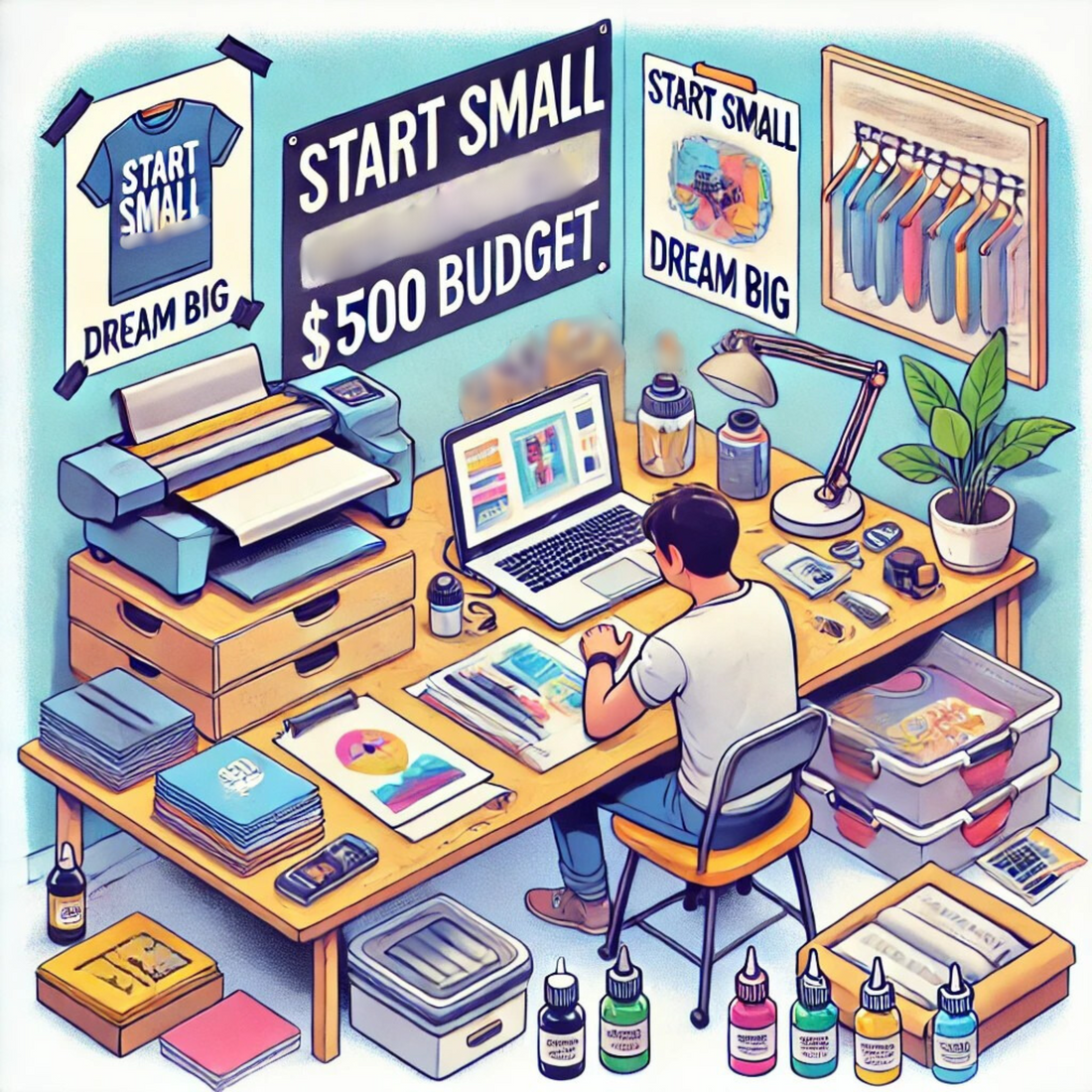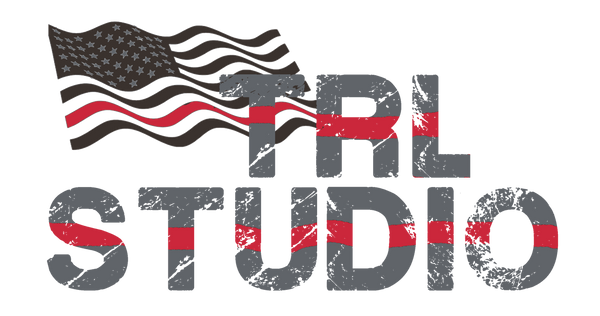
Diving into DTF: Launching a Custom Print Business with Under $500
Share
Direct-to-film (DTF) printing has revolutionized the custom apparel and merchandise industry, offering vibrant, durable prints on a wide range of materials. While professional DTF setups can be expensive, it's surprisingly possible to dip your toes into this exciting market and even start a small business with a minimal investment of under $500. This article will guide you through the essentials of launching a DTF transfer-based business on a budget, covering equipment, supplies, design, marketing, and scaling strategies.
Understanding the DTF Process (and Why it's Budget-Friendly for Startups)
Traditional DTF printing involves printing a design onto a special PET film using a DTF printer loaded with specialized ink. This printed film is then dusted with a hot-melt powder adhesive, which bonds to the ink. The film is then heat-pressed onto the desired fabric or substrate, transferring the design. While a full-fledged DTF setup requires a dedicated printer, ink, film, powder, and heat press, the transfer aspect opens doors for budget-conscious entrepreneurs.
Instead of investing in the printing equipment upfront, you can leverage DTF transfer services. These services allow you to upload your designs and order pre-printed transfers, ready for you to apply with a heat press. This eliminates the significant initial investment in printing hardware, making DTF accessible to anyone with a creative vision and a small budget.
Your $500 Startup Toolkit:
With a $500 budget, your focus will be on the essential tools and supplies for receiving and applying DTF transfers, along with building a foundation for your business. Here's a breakdown:
-
Heat Press ($200 - $300): A heat press is your most crucial piece of equipment. A clamshell-style press is a good starting point for its affordability and ease of use. Look for a press with a decent-sized platen (e.g., 12" x 15" or 15”x15”) to accommodate various designs. Consider buying used to save money, but ensure it's in good working condition. Research different brands and models to find one that fits your budget and needs. Below is a list of some places to get you started on finding a beginner press:
Facebook marketplace, and any other sales marketplaces or online auctions close to your area.
-
Heat-Resistant Teflon Sheets ($10 - $20): These protect your heat press and garments during the transfer process. They are reusable and essential for clean transfers.
-
Heat Transfer Tape ($5 - $10): Used to precisely position the transfer on the garment.
-
Guide Ruler ($5 - $10): A good ruler will allow you to align and properly set your transfer consistently on your substrate.
-
Garments/Blanks ($100 - $150): Start with a small inventory of popular items like t-shirts, hoodies, tote bags, hats, or other products you plan to offer. Choose quality blanks that will showcase your designs well. Consider purchasing in bulk for better pricing.
-
Design Software (Paid Monthly Subscription): You'll need software to create or edit your designs. Canva and Kittl offer basic design tools, while more advanced software like Adobe Illustrator or Photoshop ($$) provide greater flexibility and control. * Note* - Your designs will need to be in a High Quality format CMYK usually a .png or .svg file format is preferred
-
Ordering DTF Transfers ($50 - $100): Research reputable DTF transfer services. Most print services require 300 DPI or better. Order samples from a few different providers to test print quality, color accuracy, and turnaround time. Factor in the cost of the transfers when pricing your products.
Building Your Business: Design, Marketing, and Operations
-
Design is King: High-quality, eye-catching designs are the core of your business. If you're not a designer yourself, consider collaborating with freelance designers or utilizing pre-made designs (with appropriate licensing). Focus on creating designs that are trendy, unique, and appeal to your target audience.
-
Target Audience: Define your niche. Who are you trying to reach? Are you focusing on custom apparel for sports teams, personalized gifts, or a specific aesthetic? Understanding your target audience will help you tailor your designs and marketing efforts.
-
Marketing on a Shoestring: With a limited budget, focus on organic marketing strategies:
-
Social Media: Create engaging content showcasing your designs and products. Use relevant hashtags and interact with potential customers. Platforms like Instagram, TikTok, and Facebook are great for visual marketing.
-
Local Networking: Connect with local businesses, schools, or community groups. Offer custom printing services for events, fundraisers, or team apparel.
-
Word-of-Mouth: Encourage satisfied customers to spread the word about your business. Offer incentives for referrals.
-
Online Marketplaces: Consider listing your products on Etsy or other online marketplaces to reach a wider audience.
-
Pricing Strategy: Calculate your costs carefully, including the cost of blanks, transfers, packaging, and your time. Research competitor pricing to ensure you're competitive while still making a profit. Consider offering tiered pricing for bulk orders.
-
Order Fulfillment: Develop a streamlined process for receiving orders, applying transfers, and shipping or delivering products. Efficient order fulfillment is crucial for customer satisfaction.
-
Customer Service: Provide excellent customer service. Respond promptly to inquiries, address any issues quickly, and build positive relationships with your customers.
Scaling Your Business:
-
Reinvest Profits: As your business grows, reinvest your profits back into the business. This could include upgrading your heat press, purchasing more blanks, or investing in better design software.
-
Expand Your Product Line: Offer a wider range of products to attract more customers. This could include different types of apparel, accessories, or home goods.
-
Explore Direct-to-Garment (DTG) Printing (Long-Term): As your volume increases, you might consider investing in a DTG printer, which prints directly onto garments. This offers greater flexibility and faster turnaround times for larger orders. However, this is a significant investment and should be considered when your business is more established.
-
Consider Offering Your Own DTF Transfer Services: Once you have a better understanding of the process and have built a customer base, you could potentially offer your own DTF transfer printing services to other small businesses or individuals. This requires a much larger investment in equipment but can be a significant revenue stream.
-
Build a Brand: Develop a strong brand identity that resonates with your target audience. This includes your logo, website, and overall brand messaging.
Challenges and Considerations:
-
Competition: The custom apparel market is competitive. Differentiate yourself through unique designs, excellent customer service, and competitive pricing.
-
Transfer Quality: The quality of your final product depends heavily on the quality of the DTF transfers you order. Thoroughly research and test different transfer services.
-
Order Minimums: Some DTF transfer services may have minimum order quantities. Factor this into your planning.
-
Inventory Management: Managing inventory efficiently is crucial. Avoid overstocking popular items and keep track of your stock levels.
-
Shipping and Handling: Factor in shipping costs and handling time when pricing your products.
Conclusion:
Starting a DTF-based custom print business with under $500 is entirely feasible by utilizing DTF transfer services. By focusing on creative designs, effective marketing, and excellent customer service, you can build a successful business, even with a limited budget. Remember to start small, learn as you go, and reinvest your profits to scale your business over time. The DTF market is ripe with opportunity, and with dedication and hard work, you can carve out your own niche and create a thriving business.
